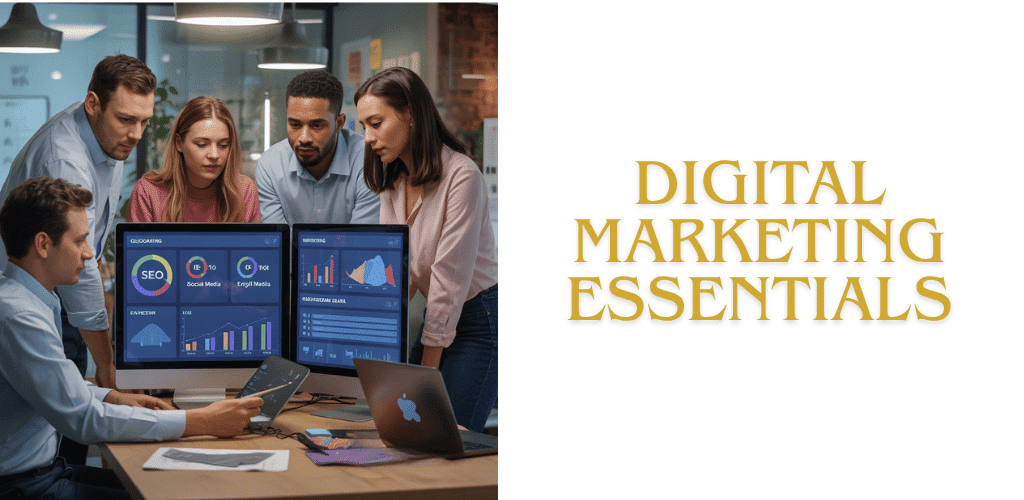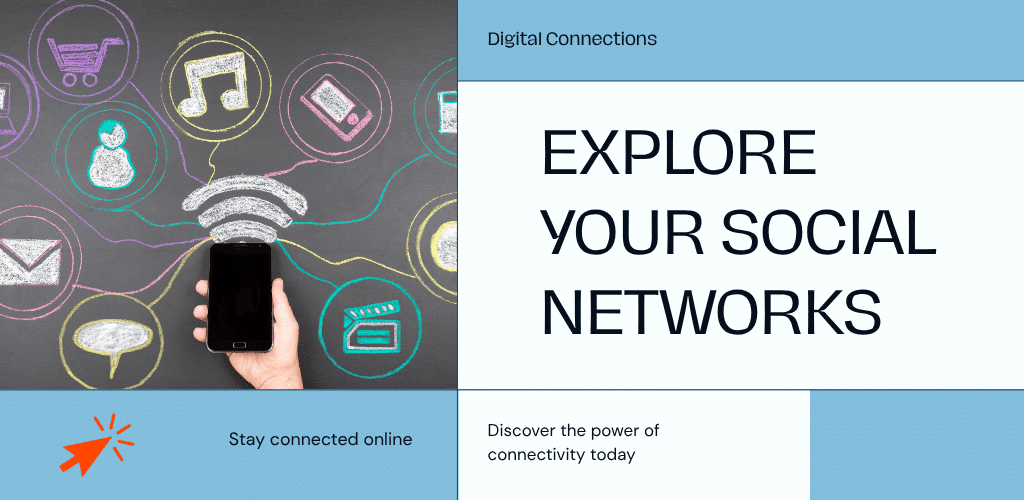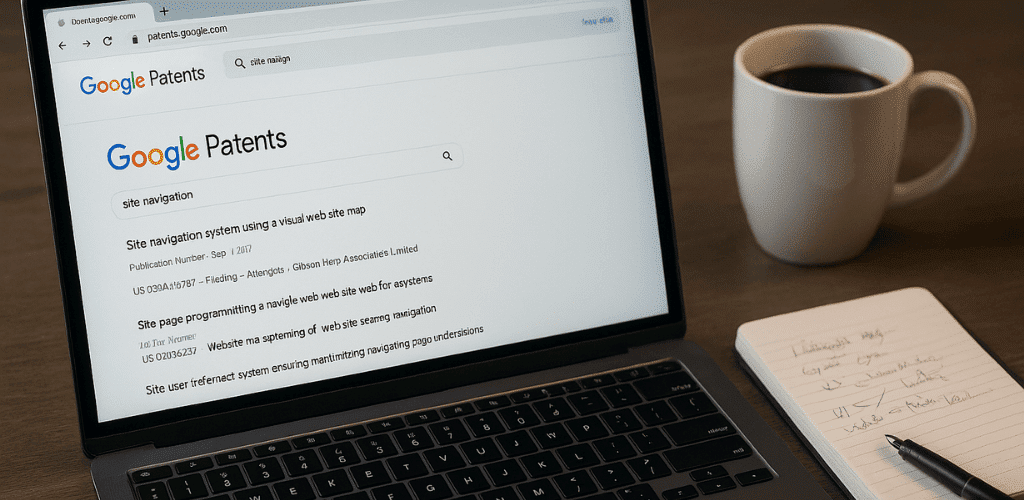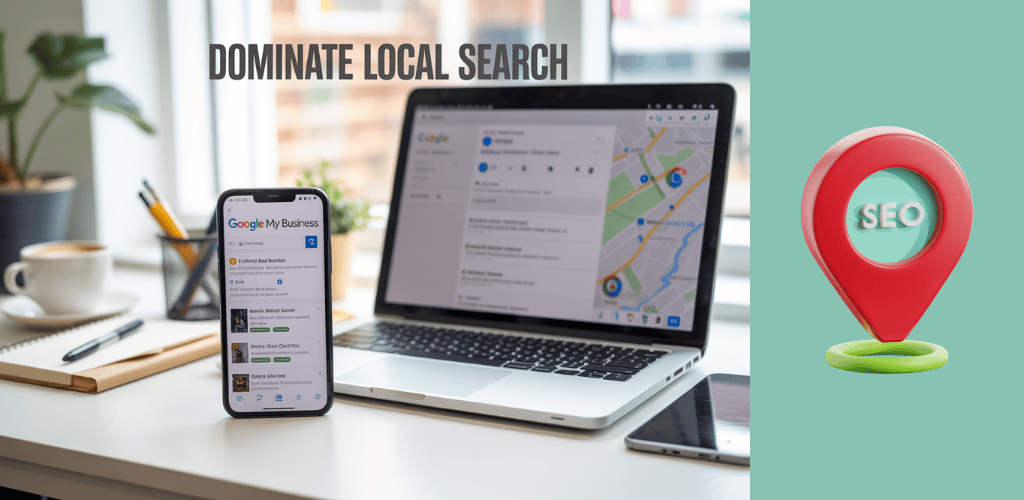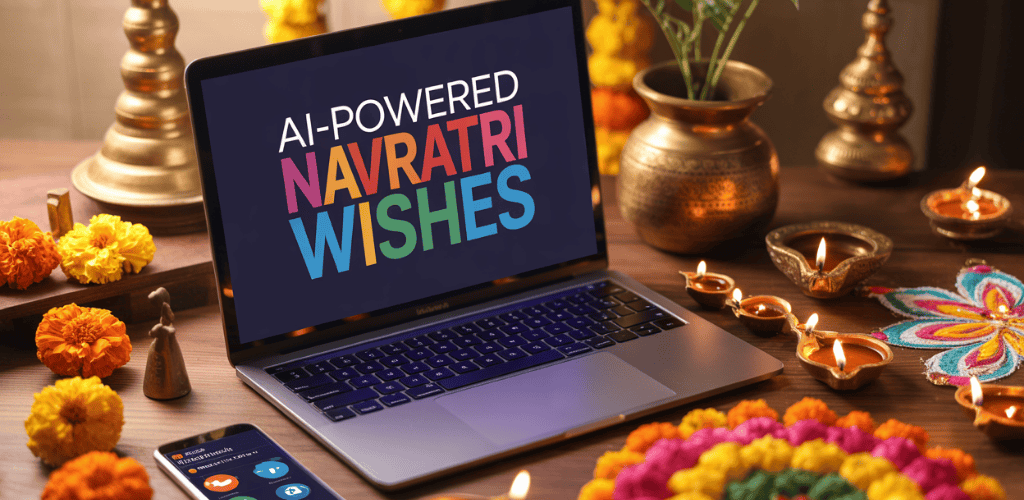You’ve seen the ads that follow you around online after browsing shoes. You’ve wondered how some brands seem to read your mind with eerily perfect timing. That’s digital marketing at work, and it’s reshaping how every business connects with customers.
Digital marketing isn’t just for the tech giants or marketing gurus anymore. It’s the backbone of modern business growth, whether you’re a solopreneur or leading a Fortune 500 company.
Think about it: when was the last time you made a purchase without encountering at least one digital touchpoint? Probably can’t remember, right?
The truth is, understanding digital marketing fundamentals isn’t just “nice to have” anymore—it’s survival. And the businesses mastering it are leaving competitors in the digital dust.
But here’s what most guides won’t tell you about digital marketing success…
Table of Contents
What Is Digital Marketing?
Key Takeaways
Digital marketing is the promotion of products and services through online channels and digital technologies. Unlike traditional marketing, it gives you real-time results and precise targeting capabilities.
The main pillars of digital marketing include:
- Search Engine Optimization (SEO): Boosting your website’s visibility in organic search results
- Pay-Per-Click (PPC): Running paid ads that appear when people search specific terms
- Social Media Marketing: Engaging with your audience on platforms like Instagram, Facebook, and TikTok
- Content Marketing: Creating valuable content that attracts and retains customers
- Email Marketing: Sending targeted messages directly to prospects and customers
What makes digital marketing so powerful? For starters, it’s incredibly cost-effective compared to traditional methods. A small business can compete with industry giants using smart digital strategies without breaking the bank.
It’s also ridiculously measurable. Want to know exactly how many people clicked your ad, visited your website, or made a purchase? Digital marketing tells you all that and more.
And the targeting? Mind-blowing. You can zero in on people based on their location, interests, behaviors, and demographics. Try doing that with a billboard!
The digital landscape changes fast though. What worked yesterday might not work tomorrow. Algorithms update, platforms evolve, and consumer preferences shift constantly.
Success in digital marketing means understanding your audience deeply. Who are they? What do they want? Where do they hang out online? Answer these questions, and you’re halfway there.
Mobile optimization isn’t optional anymore—it’s essential. With most people browsing on their phones, your digital marketing efforts need to look great on small screens.
Data is your best friend in digital marketing. Use analytics to understand what’s working, what’s not, and where to invest your resources.
Remember: digital marketing isn’t just about selling—it’s about building relationships. The brands that win create genuine connections with their audiences through valuable, relevant content and interactions.
Whether you’re a solopreneur or a marketing director at a Fortune 500 company, mastering digital marketing is no longer just nice to have—it’s necessary for survival in today’s business world.
How digital marketing works
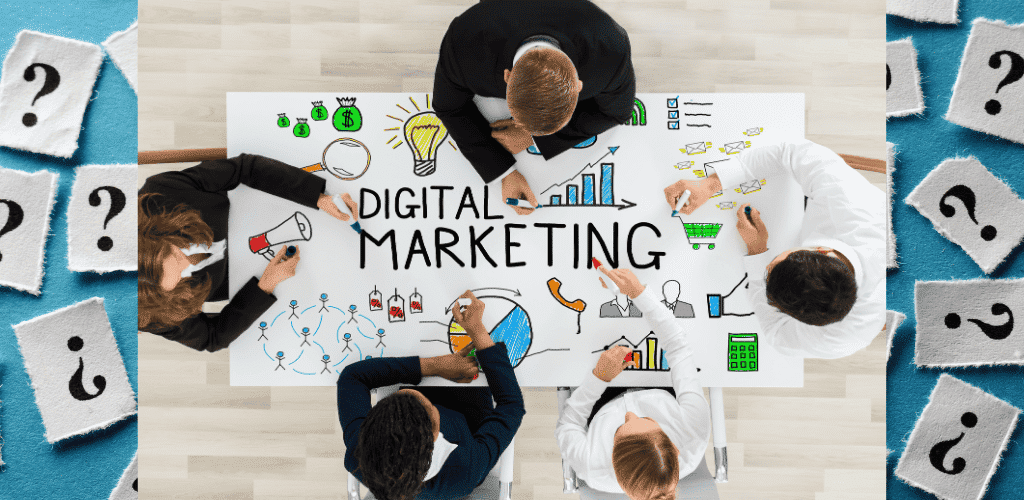
The Engine Behind the Digital Magic
Digital marketing isn’t some mystical force—it’s a practical system that connects businesses with customers where they’re already hanging out: online. At its core, digital marketing works by targeting specific audiences through various online channels to drive brand awareness, engagement, and ultimately, conversions.
Identifying Your Audience
Picture this: You can’t hit a target you can’t see. That’s why smart marketers start by creating detailed buyer personas—fictional representations of ideal customers based on real data. They analyze demographics, online behavior, pain points, and goals.
A coffee shop owner might discover their core audience consists of:
- Remote workers seeking quiet spaces
- College students needing caffeine and Wi-Fi
- Morning commuters grabbing to-go orders
This knowledge shapes everything that follows.
Selecting the Right Channels
Digital marketing isn’t one-size-fits-all. Different platforms serve different purposes:
| Channel | Best For | Example Use |
|---|---|---|
| Social Media | Brand awareness, community building | Sharing behind-the-scenes content |
| Nurturing leads, customer retention | Sending personalized promotions | |
| SEO | Driving organic traffic | Ranking for “best coffee shop in Portland” |
| PPC | Quick traffic generation | Advertising a limited-time offer |
The magic happens when these channels work together. A customer might discover your brand through an Instagram post, visit your website, sign up for your newsletter, and finally make a purchase after receiving a promotional email.
Creating Compelling Content
Content is the fuel that powers digital marketing. But not just any content—it needs to be valuable, relevant, and consistent.
Think about it: Nobody wants to see another generic “Buy Now!” ad. They want solutions to their problems, answers to their questions, or sometimes just a good laugh.
Measuring What Matters
Digital marketing’s secret weapon? It’s measurable. Unlike a billboard where you hope people see it, digital channels provide concrete data:
- How many people viewed your content
- Who clicked on your links
- Which campaigns generated actual sales
- What your return on investment was
This allows for continuous optimization. If something’s not working, you can change course quickly without burning through your entire budget.
Automation and Personalization
Today’s digital marketing leverages technology to deliver personalized experiences at scale. Marketing automation tools can send triggered emails based on specific actions, segment audiences, and deliver personalized content to thousands of people simultaneously.
Learn about the benefits and importance of digital marketing
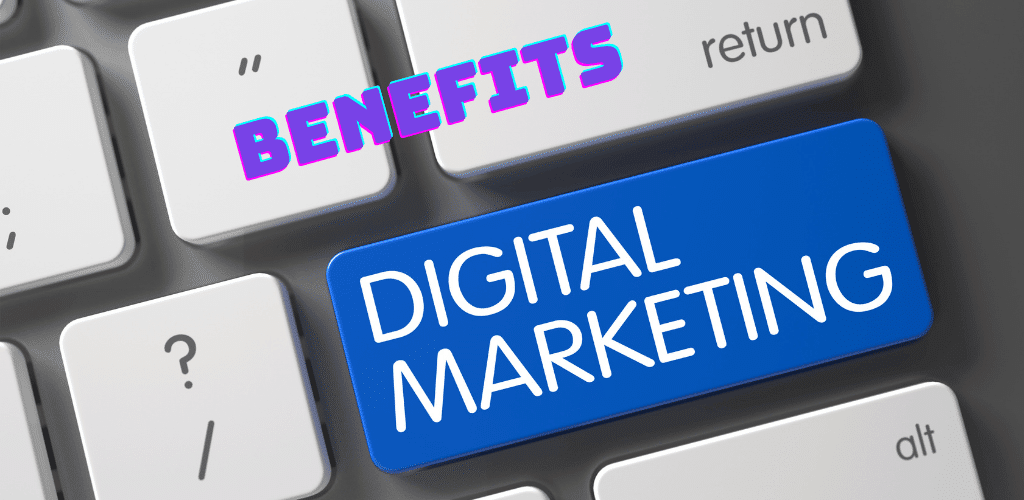
Why Digital Marketing Matters
Digital marketing isn’t just a fancy buzzword. It’s revolutionizing how businesses connect with customers in ways traditional marketing never could.
Think about it – when was the last time you looked up a business in a phone book? Yeah, I can’t remember either. These days, we grab our phones and search online.
Cost-Effectiveness That Makes Sense
Traditional marketing burns through cash like nobody’s business. TV commercials, billboards, newspaper ads – they all cost a fortune and you can’t even tell if they’re working.
Digital marketing flips this on its head. With just a fraction of that budget, you can reach thousands of potential customers. Plus, you get detailed reports showing exactly what’s working and what isn’t.
A small coffee shop owner I know switched from local paper ads to Instagram posts and targeted Facebook ads. Her monthly marketing spend dropped from $1,200 to under $300, while customer traffic increased by 40%.
Precise Audience Targeting
Gone are the days of throwing your message into the void and hoping the right people hear it.
Digital marketing lets you zero in on exactly who you want to reach:
- People in specific locations
- Certain age groups
- Folks with particular interests
- People actively searching for your products
This precision means every dollar you spend goes toward reaching people who actually might become customers.
Measurable Results
The beauty of digital marketing is in the numbers. You get real data about:
- How many people saw your ad
- Who clicked on it
- What they did afterward
- Whether they became customers
No more guessing if your marketing is working. You know, with actual numbers.
Global Reach from Day One
A physical store is limited by location. Digital marketing isn’t.
Even tiny businesses can sell to customers worldwide with the right digital strategy. A handmade jewelry creator in rural Minnesota now ships to customers in 27 countries thanks to her strategic Instagram marketing and simple website.
Building Relationships, Not Just Sales
Digital marketing creates two-way conversations with customers. Through social media, email, and other channels, you can:
- Answer questions directly
- Respond to feedback
- Show your brand personality
- Build actual relationships
When customers feel connected to your brand, they stick around longer and tell friends about you.
Adaptability When Things Change
Markets shift, trends evolve, customer preferences change. Digital marketing lets you pivot quickly.
If a campaign isn’t performing well, you can adjust it immediately – no waiting for next month’s magazine to go to print or for a billboard contract to expire.
Discover key channels and strategies involved
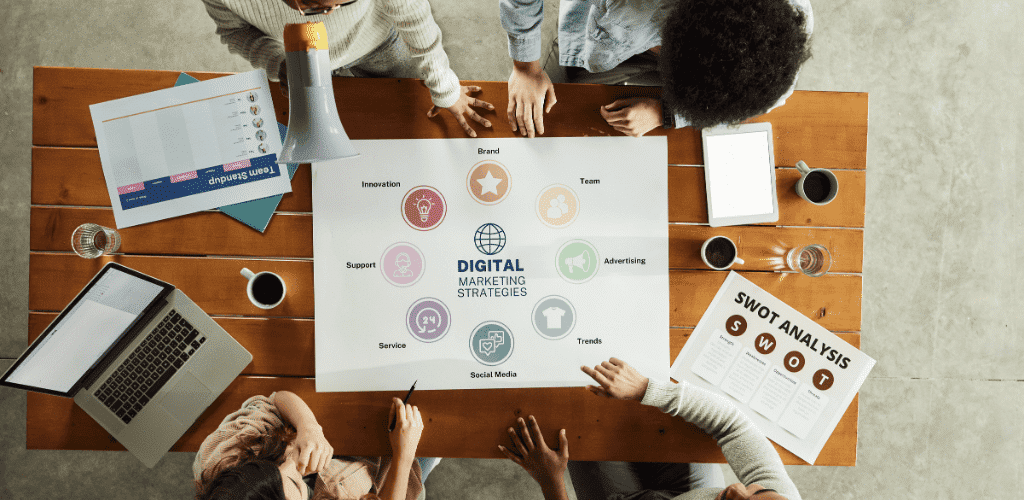
Search Engine Optimization (SEO)
Digital marketing without SEO is like opening a store in the middle of nowhere. Good luck getting found!
SEO helps your website climb those Google rankings so people actually see you when they’re searching for what you offer. It’s not just about stuffing keywords anymore (thank goodness). Modern SEO is a mix of:
- Creating content that actually answers people’s questions
- Making your site load fast and work well on mobile
- Building quality backlinks from other reputable sites
- Optimizing your technical setup so Google can easily crawl your pages
The best part? Unlike paid ads, SEO traffic keeps coming even when you’re not actively spending money. It’s the gift that keeps on giving.
Social Media Marketing
Everyone and their grandmother is on social media these days. Literally.
Each platform has its own vibe and audience. Instagram and TikTok are visual playgrounds. LinkedIn is where professionals hang out. Twitter is for quick takes and conversations.
The trick isn’t being everywhere at once. It’s picking the platforms where your people actually spend time and creating content that stops the endless scroll.
Effective social media marketing isn’t about constant self-promotion. It’s about:
- Building genuine connections with your audience
- Creating shareable content that entertains or informs
- Starting conversations, not just broadcasting messages
- Leveraging both organic and paid opportunities
Content Marketing
Content marketing is playing the long game. Instead of interrupting people with ads, you’re creating stuff they actually want to consume.
Blog posts, videos, podcasts, infographics—all these formats can work wonders when done right. The goal is to provide so much value that people start seeing you as the go-to authority in your space.
The content marketing flywheel looks something like this:
- Create helpful, relevant content
- Attract potential customers
- Build trust through consistent value
- Convert readers/viewers into customers
- Retain them with ongoing quality content
Email Marketing
Don’t believe anyone who tells you email is dead. It’s still delivering some of the highest ROI in digital marketing.
Email lets you speak directly to people who’ve already shown interest in what you do. No algorithm changes to worry about. No middleman deciding who sees your message.
The key to email marketing success is segmentation and personalization. Nobody wants generic blasts anymore. They want messages that feel like they were written just for them.
Why is online marketing important?
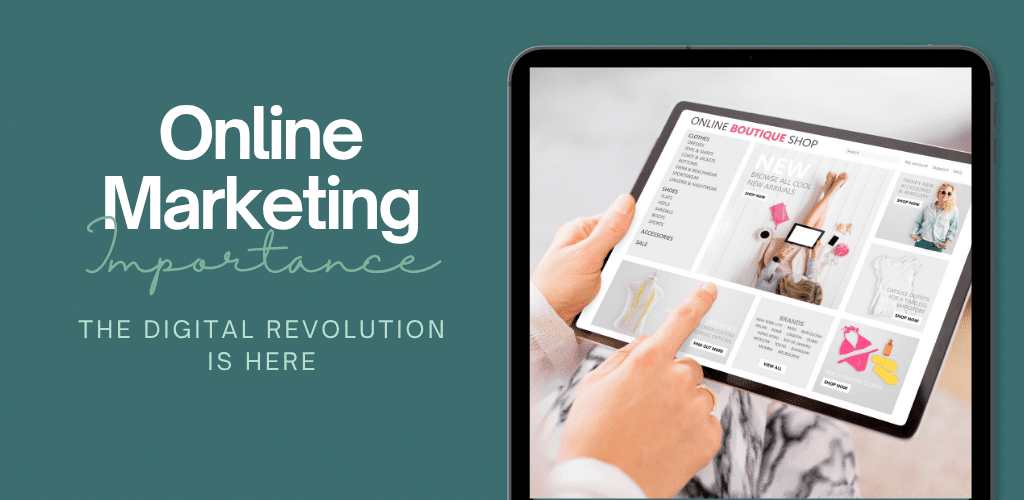
Online marketing isn’t just a fancy addition to your business strategy – it’s becoming the whole ballgame.
The Digital Revolution Is Here
Remember when you had to flip through the Yellow Pages to find a business? Those days are long gone. Now, 81% of shoppers research online before making a purchase. If you’re not visible in the digital world, you might as well be invisible.
Think about your own habits. When you need a new product or service, where do you turn first? Your phone or computer, right? You’re not alone.
24/7 Availability That Traditional Marketing Can’t Match
Your brick-and-mortar store closes at night. Your billboards get ignored in the dark. But your online presence? It never sleeps.
Online marketing keeps you connected with customers around the clock. Someone in Tokyo can discover your Dallas-based business at 3 AM. A potential client can read your blog post during their midnight insomnia bout. Your products can sell while you sleep.
That’s power traditional marketing simply can’t deliver.
Cost-Effectiveness That Makes Sense
The numbers don’t lie:
| Marketing Channel | Average Cost | Potential Reach |
|---|---|---|
| TV Commercial | $115,000+ | Regional |
| Billboard | $2,000-$10,000/month | Local |
| Social Media Ad | $200-$1,500/month | Global |
| Email Marketing | $9-$1,000/month | Targeted |
Digital marketing gives small businesses the chance to compete with industry giants without needing their massive budgets.
Measurable Results You Can Actually See
With traditional marketing, you’re often shooting in the dark. Did that expensive newspaper ad actually bring in customers? Who knows.
Online marketing changes everything with real-time analytics. You can see:
- Who visited your website
- How they found you
- What they looked at
- How long they stayed
- What made them buy (or leave)
This data lets you adjust campaigns instantly, doubling down on what works and fixing what doesn’t.
Targeting Like Never Before
Mass marketing is wasteful. Why pay to reach people who will never need your product?
Digital marketing lets you laser-focus on the exact people most likely to become customers. Want to target 35-45 year old dog owners in Seattle who like hiking? Done.
This precision means higher conversion rates and better ROI. You’re not just reaching more people – you’re reaching the right people.
Types of digital marketing
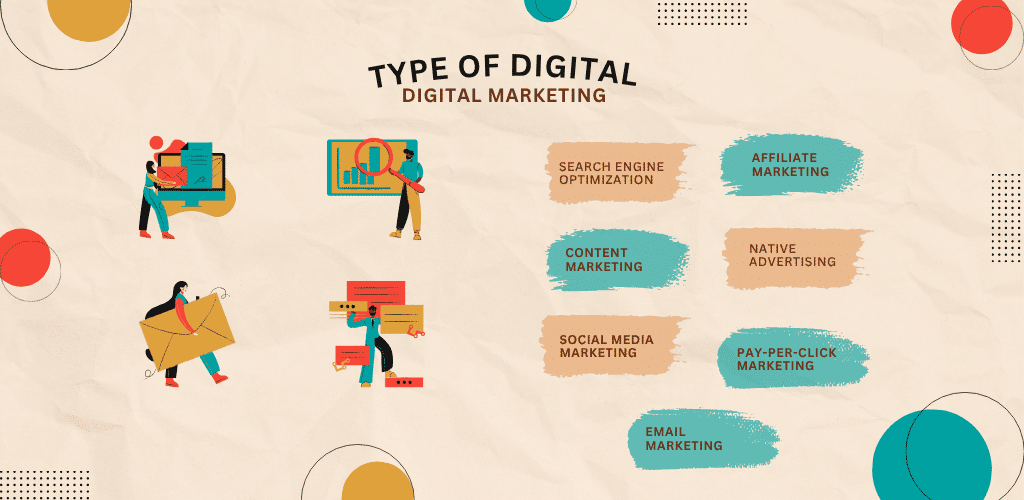
Search Engine Optimization
SEO is all about getting your website to show up when people search for things related to your business. Think of it as making your website speak the same language as Google.
When you nail SEO, your website climbs those search results, bringing in more visitors without paying for ads. It’s like having your store on Main Street instead of some back alley.
Good SEO involves:
- Using relevant keywords in your content
- Building quality backlinks from other sites
- Creating fast-loading, mobile-friendly pages
- Publishing helpful, original content regularly
The beauty of SEO is that it keeps working for you long after you’ve put in the effort. Unlike paid ads that stop the minute you stop paying.
Content Marketing
Content marketing is showing off your expertise instead of just screaming “buy my stuff!” It’s about creating blog posts, videos, podcasts, or infographics that actually help your audience.
When you consistently create useful content, you become the go-to expert in your field. People start trusting you. And guess what happens when people trust you? They buy from you.
The magic of content marketing isn’t in the hard sell—it’s in building relationships through valuable information.
Social Media Marketing
Social media marketing is where you connect with customers where they already hang out. Facebook, Instagram, LinkedIn, Twitter, TikTok—these aren’t just platforms, they’re communities.
Each platform has its own vibe:
- Instagram for visual products and lifestyle brands
- LinkedIn for B2B and professional services
- TikTok for reaching younger audiences with creative content
The real power of social media marketing isn’t just posting—it’s engaging. Responding to comments, joining conversations, and building a community around your brand.
Pay-Per-Click Marketing
PPC is digital advertising where you only pay when someone clicks your ad. It’s like putting up a billboard but only paying when someone takes a photo of it.
Google Ads is the big player here, showing your ads when people search for specific terms. But there’s also social media ads, display ads, and remarketing campaigns that follow people around the web.
The best thing about PPC? Instant results and complete control. You can turn campaigns on and off, adjust budgets on the fly, and target incredibly specific audiences.
Affiliate Marketing
Affiliate marketing is getting other people to sell your stuff for a cut of the profits. Think of it as having a sales team that only gets paid when they actually make sales.
It works because people trust recommendations from content creators they follow. When an influencer or blogger they respect suggests a product, their audience listens.
Native Advertising
Native ads blend in with the platform they’re on. They look like regular content but are actually paid placements.
You’ve seen these—the “sponsored content” articles on news sites or the “recommended products” that match the look and feel of the website you’re browsing.
How to create a digital marketing strategy
A. Set SMART Goals
Gone are the days of vague goals like “increase website traffic.” You need targets you can actually measure.
SMART goals change the game:
- Specific: “Get 5,000 new email subscribers” beats “grow our list”
- Measurable: Numbers don’t lie. Track those metrics!
- Achievable: Shooting for the stars? Great. Just make sure you have a rocket.
- Relevant: Does this goal actually help your business? If not, why bother?
- Time-bound: “By Q3” creates urgency. “Someday” creates nothing.
A real SMART goal looks like this: “Increase organic website traffic by 25% within 6 months by publishing 2 SEO-optimized blog posts weekly.”
B. Identify Your Audience
You can’t market to everyone. And trust me, you don’t want to.
Start by creating buyer personas – detailed profiles of your ideal customers. Include:
- Demographics (age, location, income)
- Pain points (what keeps them up at night?)
- Goals (what are they trying to achieve?)
- Online behavior (where do they hang out digitally?)
Talk to actual customers. Send surveys. Check your analytics. The gold is in the details.
Remember that 25-year-old fitness enthusiast in Chicago has different needs than a 45-year-old executive in rural Montana. Your marketing should reflect that.
C. Create a Budget
Digital marketing isn’t free. Even “free” channels cost you time.
Break your budget down by:
- Channel (social media, SEO, paid ads)
- Tools (analytics, automation, design)
- Talent (in-house, freelance, agency)
Start small if you’re new. Test $500 on Google Ads before dropping $5,000.
The beauty of digital? You can track ROI precisely. Spend $100, make $300? Do more of that. Spend $100, make $50? Time to pivot.
D. Select Your Digital Marketing Channels
Not all channels work for every business. A B2B software company probably doesn’t need TikTok (yet).
Consider these popular options:
- Search engine optimization (SEO)
- Content marketing
- Email marketing
- Social media (organic and paid)
- Pay-per-click advertising (PPC)
- Affiliate marketing
Pick 2-3 channels to start. Master those before expanding. Spreading yourself too thin is the fastest way to mediocre results across the board.
E. Refine Your Marketing Efforts
Digital marketing isn’t “set it and forget it.” It’s “set it, measure it, tweak it, repeat.”
Check your analytics weekly. What’s working? What’s bombing?
A/B test everything:
- Email subject lines
- Ad headlines
- Landing page copy
- Call-to-action buttons
The smallest changes often drive the biggest results. That green button might outperform the red one by 50%.
Don’t get emotionally attached to campaigns. Let the data speak. If something’s not working after proper testing, kill it and reallocate resources to what is working.
Digital marketing creates growth
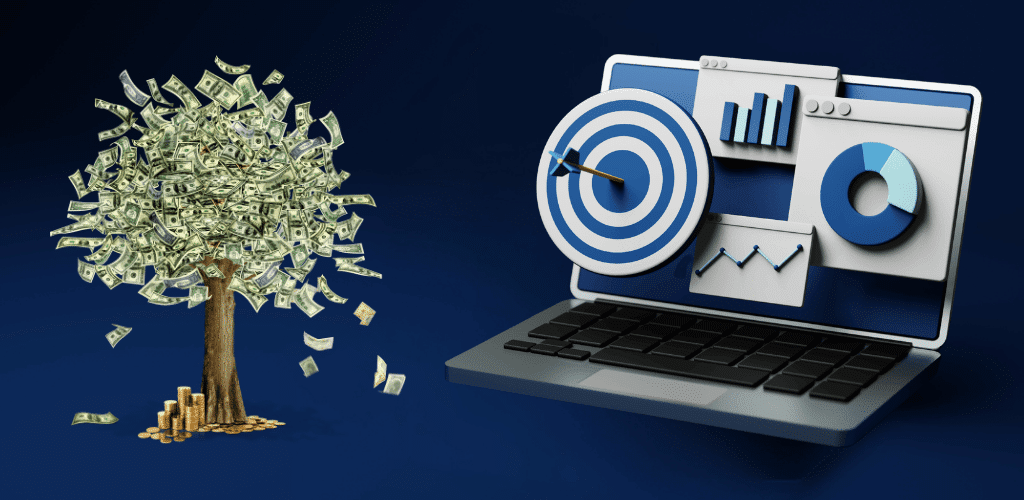
The Growth Catalyst
Digital marketing isn’t just another business buzzword. It’s the rocket fuel that propels businesses forward in today’s connected world.
Think about this: When was the last time you discovered a new brand through a billboard? Now compare that to how many companies you’ve found through Instagram ads, Google searches, or email newsletters.
The numbers don’t lie. Companies embracing digital marketing strategies see an average of 2.8x better revenue growth than their competitors stuck in traditional marketing approaches.
Why Digital Marketing Drives Growth Like Nothing Else
Digital marketing creates real, measurable growth because it:
- Meets customers where they already are
- Scales without proportional cost increases
- Provides actionable data for continuous improvement
Most people spend nearly 7 hours daily online. That’s where their attention is. That’s where they make decisions. And that’s exactly where your business needs to be.
Small Investment, Massive Returns
Remember the old days when marketing meant taking out expensive TV commercials or newspaper ads without knowing if anyone actually saw them?
Digital marketing flips that model on its head.
A local bakery I worked with spent just $500 on targeted Facebook ads and generated over $7,500 in new business within a month. Their traditional flyer campaign the previous year? A $1,200 investment that brought in maybe $1,500.
Real-Time Adaptability
The beauty of digital marketing is you’re never stuck with a failing strategy.
Running a Google Ads campaign that’s not performing? Change it instantly.
Email open rates dropping? Test a new subject line approach tomorrow.
Social media post flopping? Analyze why and adjust your next post.
This flexibility means you’re always optimizing your growth potential, something traditional marketing simply can’t match.
Breaking Through Geographic Barriers
Digital marketing erases boundaries. A boutique clothing store in Portland can sell to customers in Paris. A consultant in Singapore can land clients in Stockholm.
This global reach isn’t just for big corporations anymore. Even solo entrepreneurs and small businesses can compete internationally thanks to digital marketing tools and platforms.
The Compounding Effect
Digital marketing creates something magical: compounding growth.
That blog post you wrote last year? Still bringing in traffic.
The YouTube tutorial from three years ago? Still generating leads.
Your Pinterest pins? Still driving sales long after posting.
Unlike traditional marketing’s temporary impact, digital assets continue working for you, building on each other to create exponential rather than linear growth.
Take your business to the next level
Tools and Resources
Digital marketing isn’t just about strategy—it’s about having the right tools to execute those strategies effectively. The difference between good and great often comes down to which resources you’re leveraging.
Analytics Tools
Google Analytics remains the cornerstone of digital marketing measurement. But have you actually used it to its full potential? Most marketers only scratch the surface, looking at basic traffic numbers while missing the goldmine of user behavior insights hiding beneath.
Tools like Hotjar take things further by showing you exactly how users navigate your site with heatmaps and session recordings. Nothing beats watching real people get confused by your checkout process to understand why your conversion rates are tanking.
For social media, native analytics on platforms don’t tell the whole story. Tools like Sprout Social or Buffer Analyze connect the dots between posting times, engagement, and actual business results.
Automation Platforms
Marketing automation isn’t a luxury anymore—it’s a necessity if you don’t want to burn out.
Email marketing platforms like Mailchimp and ActiveCampaign let you set up triggers based on customer behavior. When someone abandons their cart, views a specific product three times, or hits your pricing page repeatedly, you can automatically send them the perfect message at the perfect time.
Social media scheduling tools save countless hours. Later, Hootsuite, and Buffer let you batch-create content when you’re feeling creative, then distribute it when your audience is most active.
Learning Resources
The digital marketing landscape changes weekly. Seriously. What worked last quarter might be useless now.
Some essential resources to stay current:
- HubSpot Academy offers free certifications that actually teach practical skills
- Neil Patel’s blog breaks down complex concepts into actionable advice
- Search Engine Journal keeps you updated on algorithm changes
- Think with Google provides research and insights straight from the search giant
Content Creation Tools
Content creation used to require a full creative team. Now AI writing assistants like Jasper and Copy.ai can help generate ideas or rough drafts in seconds.
Canva has democratized design, letting non-designers create professional-looking graphics without the Adobe learning curve.
Video content creation tools like Descript allow you to edit videos by editing text—literally removing the “uhms” and awkward pauses from your recordings with a few clicks.
The right tools don’t just make your job easier—they fundamentally transform what’s possible for your business. The companies leaving their competition in the dust aren’t necessarily working harder—they’re leveraging better tools to work smarter.
FAQ’s
What is the primary purpose of understanding digital marketing for my business growth
Digital marketing isn’t just a fancy buzzword – it’s the backbone of modern business growth.
The primary purpose? Simple. It connects you with customers where they already are – online.
Think about it. Your potential customers scroll through Instagram while waiting for coffee. They Google solutions to their problems at 2 AM. They check their email during lunch breaks.
Without digital marketing, you’re essentially invisible to these people.
When you truly understand digital marketing, you can:
- Target the exact people who need your products or services
- Measure exactly what’s working (and what’s not)
- Adjust your strategy in real-time rather than waiting months
- Scale your efforts without proportionally scaling costs
Most businesses that struggle are taking shots in the dark. They create content nobody searches for. They advertise to people who don’t care. They build websites that confuse visitors.
Understanding digital marketing means ending that guesswork.
How can I use search intent insights to create more targeted digital marketing content
Search intent is the secret sauce nobody talks about enough.
It’s not just about what people search for – it’s about why they’re searching.
Someone typing “digital marketing” might want:
- A definition (informational intent)
- A service to hire (commercial intent)
- A course to buy (transactional intent)
- A specific company website (navigational intent)
The magic happens when you match your content to that specific intent.
Here’s how to do it right:
- Look at the search results for your target keywords
- Notice what’s currently ranking (videos? listicles? how-to guides?)
- Check if featured snippets appear (showing Google wants direct answers)
- Examine the language used (beginner-friendly or technical?)
Then create content that aligns with what you see.
If beginners’ guides rank for “what is digital marketing,” don’t create an advanced technical breakdown. If comparison posts rank for “best digital marketing tools,” don’t create a single product page.
Match the intent, and you’ll watch your traffic (and conversions) climb.
What are the most effective content formats to educate users about digital marketing basics
Not all content formats work equally well for teaching digital marketing fundamentals.
The most effective formats are:
- Video tutorials – Perfect for visual learners who need to see concepts in action. Short, focused videos explaining one concept at a time beat long lectures.
- Interactive tools – Calculators, analyzers, and assessments that let users input their data and get personalized insights.
- Visual infographics – Complex concepts become digestible when visualized with clear design and minimal text.
- Step-by-step guides – Breaking down processes into manageable actions gives beginners confidence to implement.Case studies – Real examples showing before/after results provide proof and context.
The key isn’t choosing just one format. It’s using multiple formats to address different learning styles and engagement preferences.
How should my website pages be structured to align with user goals around digital marketing education
Structure your website like you’d design a perfect learning journey.
Start with a clear, logical progression:
- Homepage – Immediately clarify who you help and how (with digital marketing)
- Fundamentals section – Core concepts everyone needs first
- Specialized topic pages – Branching into specific channels (SEO, social, email)
- Implementation guides – How-to content for actual application
- Resources hub – Templates, tools, and downloadables
Don’t make the rookie mistake of organizing content by what makes sense to you. Organize by how users actually learn.
Use breadcrumbs to show relationships between topics. Implement clear navigation that shows the learning pathway. Include progress indicators when possible.
And please, make everything searchable. Users often know exactly what sub-topic they need help with.
What CTAs will best motivate visitors to explore my digital marketing services or resources
The most effective CTAs speak directly to the specific value users want next.
Forget generic “Learn More” buttons. They do nothing.
Instead, try:
- “See exactly how this works” (for skeptical visitors)
- “Get your free digital marketing audit” (for those evaluating their current efforts)
- “Download this template” (for action-takers)
- “Watch a 2-minute demo” (for visual learners short on time)
Place CTAs strategically after you’ve built credibility but before you lose attention.
And here’s the game-changer most miss: different page sections need different CTAs aligned with different stages of awareness.
Top of page? “Discover how digital marketing drives growth”
Middle of page after benefits? “See our process in action”
Bottom after proof? “Schedule your strategy call”
The right CTA at the right moment can double or triple your conversion rate.
Conclusion
Digital marketing has revolutionized how businesses connect with their audiences, encompassing everything from SEO and social media to email campaigns and content marketing. As we’ve explored, effective digital marketing requires understanding various channels, measuring performance through KPIs, and overcoming challenges like privacy concerns and algorithm changes. Whether you work with an agency or develop in-house capabilities, the digital landscape offers unprecedented opportunities to reach targeted audiences.
To thrive in this dynamic field, aspiring digital marketers should develop technical skills, creativity, and analytical thinking while remaining aware of implicit biases that may affect marketing decisions. The digital world continues to evolve rapidly, but its fundamental promise remains consistent—providing businesses of all sizes with powerful tools to create growth, build meaningful connections with customers, and achieve measurable results. By developing a strategic approach to digital marketing that aligns with your business goals, you can effectively navigate this complex but rewarding landscape and take your business to new heights.

